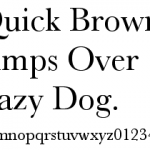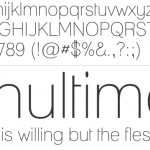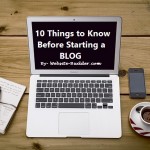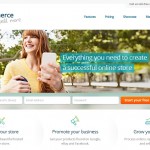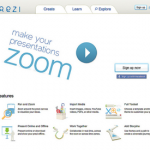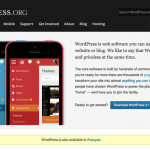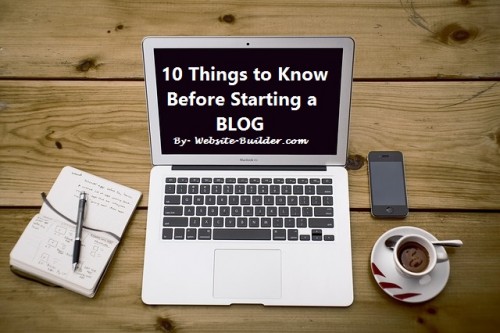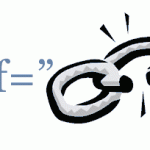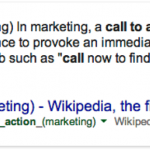The Web Designer’s Battle: Art vs Marketing
Many a designer recognizes this feeling: On one shoulder, a tiny marketer whispers analytics into your ear, sweet nothings about bounce and click-through rates. On the other shoulder, a tiny artist leans back and talks of intuition and creativity, of outlandish concepts (“wouldn’t it be great to build an e-commerce website that looks like a Dadaist magazine?”).
In the design world, choosing between the art-driven design camp and the marketing-driven design camp is often seen as a necessary choice. The logic tends to go that, if you’re a designer who understands marketers, you’ll be able to build a website that converts. If you’re a designer who cares more about “art” – about creativity over analysis – then your work is unsellable, too flouncy and poetic for the business world.
If this last paragraph made you cringe, you’re not alone. The irreparable divide between art and marketing is often cited in the web design, but it has been over-simplified, creating a polarizing effect on an industry that is still trying to figure itself out. So, how do designers reconcile the seemingly endless push and pull between data and intuition? You’ll just have to read on to find out:
Defining Design
This polarization is, of course, not a new concept. Design theorists have gone to great lengths to distinguish creative design and analytical design. In design history, two parallel theories stand out:
-
The Rational Model: Herbert Simon, the Cambridge scientist who is also credited with predicting the “Attention Economy”, developed the “Rational Model” of design, one that champions analysis, planning, and testing over emotion and intuition.
-
The Action-Centric Model: Built on Donald Schön’s “frame reflective discourse”, the “Action-Centric Model” for design posits that design is an improvisational process, one that is less rigorously linked to planning and testing and more to integrating analysis, creativity, and intuition on an even plane. Here, design operates by “framing” a problem, “moving” through tentative design decisions, and “evaluating” possible iterations of these decisions.
Of course, the marketing and “conversion rate optimization” industry have championed the Rational Model, encouraging designers to rely on the objective analysis, planning, and implementation processes that they themselves follow. The Action-Centric Model, meanwhile, feels more aligned to art-making – to the fluid process of collecting ideas, considering them amongst other factors, and putting them into place in manner that is not always in line with the science of conversion.
Design Isn’t Art
For a very long time, the difference between art and design was murky: “Art” (or rather, “aesthetics”) was what lent cultural meaning to the objects we humans use in our everyday lives, from a comb to a tea cup. This aesthetization of objects had a clear purpose: to link them more closely to our beliefs and our desires.
It was only fairly recently in the grand scale of history that art was elevated to something else other than design, something that exists on an abstracted, higher plane, relating more to the personal vision of an object’s maker than to the aestheticization of a functional object.
As the relationship between art and design ebbs and flows right up to the present day, so do misunderstandings. Just as many marketers mistakenly name designers “artists”, so too do many artists avoid being called “designers” (and vice versa). Design, after all, isn’t art as we know it today.
By most accounts, design is as it has been since the beginning: a system of object creation that seeks to address both functionality and cultural meaning. In other words, designers make things that fulfill a goal (to comb one’s hair, to drink tea, to buy something online), all while appealing to the constantly changing belief and desire systems that affect human choices.
Design Isn’t Marketing, Either
Like art, marketing has always played a role in design. The pursuit grabbing a consumer’s attention, of convincing them with a disarmingly simple combination of words and images, is, after all, integral to design.
Just as art slowly strayed away from design, though, marketing has over the years slowly strayed away from creativity. From Mad Men-style hair-brained schemes that made marketers seem more like artists than entrepreneurs, marketers began to make decisions based on cold hard facts – quantitative, as opposed to qualitative, decisions.
Online marketers have been quick to embrace data-driven decisions, because, quite simply, they were too valuable not to pass up. With the internet came big data, vast swathes of previously unattainable information on consumer behaviour. Suddenly, ignoring this data became futile, reckless even. Marketing became more of a science than it had ever considered itself to be before.
For web designers, this embrace of big data meant lesser creative freedom from the very beginning: Instead of trying out what they think customers might want, designers became (and continue to be) subject to what they’ve been told customers want.
How, then, is a designer to do his or her job – to satisfy a goal, to satisfy a client, to satisfy potential customers, and to contribute to the evolution of design – when the pull between these methods is so strong?
How to Find a Happy Medium Between Data and Intuition: 3 Tips
What does this all mean for web designers, seasoned pros and novices alike? What can a designer do to satisfy his clients (and the marketing team) while retaining his or her own design vision?
Here are 3 hard-earned tips:
-
Talk the Talk: Design meetings tend to be the epicentre of misunderstanding between designers and marketers often because neither side can agree to speak on the other’s terms. For a web designer, this means learning about the language and tools that online marketers are using. Even if you, the designer, choose not to use these analytics tools (from Google Analytics to Crazy Egg), you’ll have an idea of what your marketing colleagues are talking about, and how best to position your decisions.
-
Show Your Process:…And your mistakes. Walking your clients and your marketing colleagues through your decisions (subjective or not) helps them to see that you’re not picking ideas out of thin air but carefully considering each move you make as a designer. Showing your dead ends and mistakes further helps to show that you’re iterating, analysing and improving upon a design as opposed to stubbornly digging your heels into the ground about an idea.
-
Test Your Intuition: Many marketers assume that designers never second-guess their work, but in reality, this is far from the case. The trick, though, is to test your design intuition in ways that colleagues and clients will understand. Using a third-party app like Usability Hub’s Five Second Test or EyeQuant’s instant user attention visualizations help to lend objectivity to an otherwise subjective process – which in turn helps to convince your colleagues and clients that you know what you’re talking about.
Image Credits:
The Garden of Earthly Delights (Hieronymus Bosch) at Wikimedia Commons
Walters Art Museum [Public domain, CC-BY-SA-3.0 or GFDL, at Wikimedia Commons
Mad Men Season 6 In Care Of – John Hamm Don Draper And His Fall by Zennie Abraham at Flickr Creative Commons
Mac by Financial Times photos at Flickr Creative Commons
Most Recommended Articles:
About Bee Kay
Bee Kay is an artist and writer with a knack for writing about the intersections between web design and everyday life.


